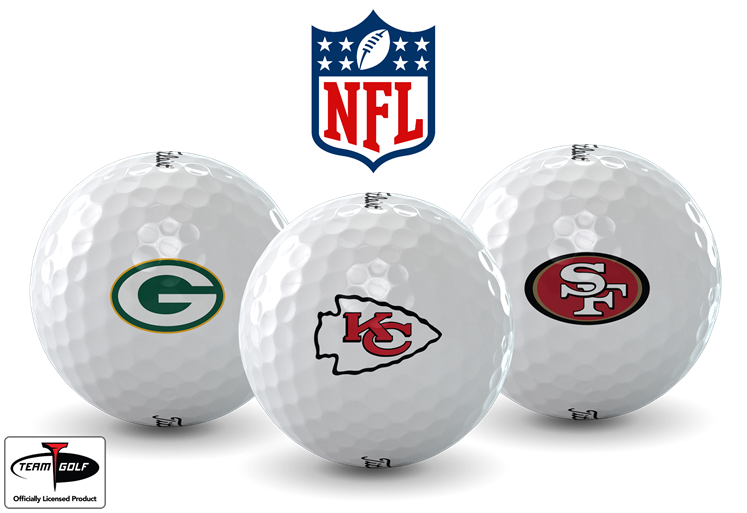Golf History

Golf history makes for wonderful and fascinating reading. It gives all golfers a sense of the enormous depth and tradition of our sport. Take a quick glance at the highlights of historical tidbits we have put together for your enjoyment.
A Scottish regiment aiding the French against the English at the Siege of Bauge is introduced to the game of chole (the probable antecedent of golf). Three identified players, Hugh Kennedy, Robert Stewart and John Smale, are credited with introducing the game in Scotland. (1421) Golf, along with football, is banned by the Scots Parliament of James II because it has interfered with military training for the wars against the English. (1457) The ban of golf is reaffirmed in the Parliaments of James III (1470) and James IV. (1491) After 43 years and with the signing of the Treaty of Glasgow between England and Scotland, the ban on golf is lifted. James IV makes the first recorded purchase of golf equipment, a set of clubs from a bow-maker in Perth, Scotland. (1502) The first commoner recorded as a golfer is Sir Robert Maule, described as playing on Barry Links (near the modern-day Carnoustie). (1527) The first recorded evidence of golf at St. Andrews. (1552) The Archbishop of St. Andrews issues a decree giving the local populace the right to play golf on the links at St. Andrews. (1553) Mary, Queen of Scots, seen playing golf shortly after the death of her husband Lord Darnley, is the first known female golfer. (1567) Golf is banned in the Blackfriars Yard, Glasgow. This is the earliest reference to golf in the west of Scotland. (1589) The City of Edinburgh bans golfing at Leith on Sunday "in tyme of sermonis." (1592)
Invention of the feathery ball. (1618) King James VI confirms the right of the populace to play golf on Sundays. (1618) First recorded reference to golf on the links of Dornoch (later Royal Dornoch), in the far north of Scotland. (1621) Charles II is playing golf at Leith when he learns of the Irish rebellion, marking the beginning of the English Civil War. He finishes his round. (1641) Golf is banned from the streets of Albany, New York-the first reference to golf in America. (1659) "A solemn match of golf" between Alexander Elphinstone and Captain John Porteous becomes the first match reported in a newspaper. Elphinstone fights and wins a duel on the same ground in 1729. (1724) The Honourable Company of Edinburgh Golfers is formed, playing at Leith links. It is the first golf club. (1744) Golfers at St. Andrews purchase a Silver Cup for an open championship played on the Old Course. Bailie William Landale is the first champion. The first codified Rules of Golf published by the St. Andrews Golfers (later the Royal & Ancient Golf Club). (1754) The first four holes at St. Andrews are combined into two, reducing the round from twenty-two holes (11 out and in) to 18 (nine out and in). St. Andrews is the first 18-hole golf course, and sets the standard for future courses. The score of 94 returned by James Durham at St. Andrews in the Silver Cup competition sets a record unbroken for 86 years. (1767) The Aberdeen Golf Club (later Royal Aberdeen) is formed. (1780) The South Carolina Golf Club is formed in Charleston, the first golf club outside of the United Kingdom. The Crail Golfing Society is formed. (1786) The Honourable Company of Edinburgh Golfers requires members to wear club uniform when playing on the links. (1788)
Earliest recorded reference to a women's competition at Musselburgh. (1810) Hickory imported from America is used to make golf shafts. (1826) William IV confers the title "Royal and Ancient" on the Golf Club at St. Andrews. (1834) The Honourable Company of Edinburgh Golfers abandons the deteriorating Leith Links, moving to Musselburgh. (1836) The longest driver ever recorded with a feathery ball, 361 yards, is achieved by Samuel Messieux at Elysian Fields. (1836) Invention of the "guttie," the gutta-percha ball. It flies farther than the feathery and is much less expensive. It contributes greatly to the expansion of the game. (1848) The Ladies' Golf Club at St. Andrews is founded, the first golf club for women. (1867) The Oxford and Cambridge University Golf Clubs are founded. (1875) The first University Match is played at Wimbledon, won by Oxford. (1878) Royal Belfast is founded. The use of moulds is instituted to dimple the gutta-percha ball. Golfers had long noticed that the guttie worked in the air much better after it had been hit several times and scuffed up. (1880) The Oakhurst Golf Club is founded at White Sulphur Springs. The first hole at The Homestead survives from this course and is the oldest surviving golf hole in America. (1884) The St. Andrews Golf Club is founded in Yonkers, N.Y., the oldest surviving golf club in America. (1888) The Open is played on an English course for the first time and is won for the first time by an Englishman, J.H. Taylor. (1894) The United States Golf Association is founded as the Amateur Golf Association of the United States. Charter members are the Chicago Golf Club, The Country Club, Newport Golf Club, St. Andrews Golf Club, and Shinnecock Hills Golf Club. (1894) Tacoma Golf Club is founded, the first golf club on the Pacific Coast. (1894) The United States Open is instituted. Willie Anderson is the first winner. (1895) Chicago Golf Club opens the United States' first 18-hole golf course. (1895) The pool cue is banned as a putter by the USGA. (1895) Freddie Tait, betting he could reach the Royal Cinque Ports G.C. clubhouse from the clubhouse at Royal St. George's-a three mile distance- in forty shots or less, puts his 32nd stroke through a window at the Cinque Ports club. (1898) The Haskell ball is designed and patented by Coburn Haskell. It is the first rubber-cored ball. The term "birdie" is coined at Atlantic C.C. from "a bird of a hole." (1898) The Western Open is first played at Glenview G.C., the first tournament in what would evolve into the PGA TOUR. (1899)
Harry Vardon wins the U.S. Open, the first golfer to win both the British and U.S. Opens. Golf is placed on the Olympic calendar for the 2nd Games at Paris. (1900) The British Open is discontinued for the duration of the First World War. (1915) The PGA of America is founded by 82 charter members and the PGA Championship is inaugurated. James Barnes is the first champion. The first miniature golf course opens in Pinehurst, North Carolina. (1916) The PGA Championship and the U.S. Open are discontinued for the duration of the First World War. (1917) The R & A limits the size and weight of the ball. (1921) The inaugural Ryder Cup Matches are played between Britain and the United States. Creeping bentgrass is developed for putting greens by the U.S. Department of Agriculture. (1927) The first Masters is played. Horton Smith is the first champion. In this inaugural event, the present-day back and front nines were reversed. (1934) The British Open and Amateur are discontinued for the duration of the Second World War. (1940)
The U.S. Open is discontinued for the duration of the war. (1942) A world-wide shortage of rubber, a vital military supply, creates a shortage and huge price increase in golf balls. (1942) Sam Snead manages to complete an entire four-day tournament playing one ball, but the professional circuit is severely curtailed. (1942) The U.S. government halts the manufacture of golf equipment for the duration of the war. (1942) The PGA Championship is cancelled for the year, and the Masters is discontinued for the duration of the war. (1943) Mildred "Babe" Zaharias becomes the first American to win the British Women's Open, at Gullane. (1947) Golf is televised for the first time, in a local St. Louis telecast of the U.S. Open. (1947) Golf World magazine is founded. (1947) The LPGA is founded, replacing the ailing Women's Professional Golf Association. (1950) Ben Hogan, only weeks after returning to the PGA TOUR following a near-fatal auto accident, wins the U.S. Open at Oakland Hills. (1950)
Francis Ouimet becomes the first American Captain of the R & A. The USGA and the R & A, in a conference, complete a newly revised Rules of Golf. Although the R & A and the USGA continue to differ over the size of the golf ball, all other conflicts are resolved in this momentous conference. (1951) The center-shafted putter is legalized world-wide. (1951) The out-of-bounds penalty is standardized at stroke-and-distance, and the stymie is finally and forever abolished. (1951) Al Brosch shoots 60 in the Texas Open to set an 18-hole PGA TOUR record. (1951) Tommy Armour's How to Play Your Best Golf All the Time is published and becomes the first golf book ever to hit the best-seller lists. (1953) Ben Hogan wins the first three legs of the modern "Grand Slam" (The Masters, U.S. Open, and British Open), but fails to win the final leg, the PGA Championship. (1953) The Tam O'Shanter World Championship becomes the first tournament to be nationally televised. Lew Worsham holes a 104-yard wedge shot on the final hole for eagle and victory in one of the most dramatic finishes ever. (1953) The Canada Cup is instituted, the first event that brings together teams from all over the world. After 1966 the tournament is known as the World Cup. (1953) Peter Thomson becomes the first Australian to win a major tournament with a victory in the British Open. (1954) Architect Robert Trent Jones, upon receiving complaints that he has made the par-3 fourth hole at Baltusrol too hard for the upcoming U.S. Open, plays the hole to see for himself and records a hole-in-one. (1954) Arnold Palmer is allowed a controversial free drop to save par in the final round of the Masters, and he goes on to defeat Ken Venturi. (1958) Bill Wright, in winning the U.S. Amateur Public Links, becomes the first African-American to win a national championship. (1959) Golf Magazine is founded, with Charles Price as the first editor. (1959)
Gary Player becomes the first foreign player to win the Masters. (1961) Caucasians-only clause stricken from the PGA constitution, and at the Greater Greensboro Open Charlie Sifford becomes the first black golfer to play in a PGA co-sponsored tournament in the South. (1961) Dr. Joseph Boydstone records 11 aces in one calendar year. Three were recorded in one round, at Bakersfield C.C., Calif. (1962) Jack Nicklaus wins his first professional tournament, the U.S. Open, the last player to win the U.S. Open as his first pro victory. (1962) Painted lines are first utilized to mark water hazards at the U.S. Open. (1962) Arnold Palmer becomes the first professional to earn over $100,000 in official prize money in one calendar year. (1963) The casting method for irons is first employed. (1963) PGA National opens, in Palm Beach, Fla. (1964) Norman Manley, an amateur from Long Beach, Calif., scores holes-in-one on two successive par-4s at Del Valley CC, Calif. It is the first and only time this feat has been accomplished. (1964) Sam Snead wins the Greater Greensboro Open, his 81st TOUR victory, a record. His victory is the eighth in the Greensboro event, also a record. Finally, he wins at the age of 52, also a PGA TOUR record. (1965) Jack Nicklaus sets a tournament record of 271 in winning the Masters. (1965) Mrs. William Jenkins Sr. of Baltimore, Md., double-eagles the par-five 12th hole at Longview GC, the longest ever recorded by a woman. (1965) Arnold Palmer passes the $1 million mark in career PGA earnings. (1968) Tommy Moore, age 6 years 1 month, 1 week, becomes the youngest player to score a hole-in-one. Moore also becomes, in 1975, the youngest player ever to score a double-eagle. (1968) Bill Burke, with a 57 at Normandie C.C., sets the all-time official record for low 18-hole score. (1970) Thad Doker of Durham, N.C., records a record two-under par 70 in the World One Club Championship at Lochmere CC. (1970)
Ben Crenshaw wins the NCAA title for a record 3rd consecutive time. Later in the year, after earning his PGA TOUR card, he wins the first event he plays as a PGA TOUR member, the San Antonio Open. (1973) The graphite shaft is invented. (1973) The World Golf Hall of Fame is opened in Pinehurst, North Carolina. (1974) Tom Weiskopf strikes a 420-yard drive in the greenside bunker on the 10th hole at Augusta National-the longest drive in Masters history. (1974) Lee Elder becomes the first black golfer to play in the Masters. (1975) Lee Trevino, Jerry Heard and Bobby Nichols are struck by lightning during the Western Open. The incident prompts new safety standards in weather preparedness at PGA events, but four spectators are killed when struck by lightning during the 1991 U.S. Open at Hazeltine National. (1975) Tom Watson is the first golfer to earn $500,000 in prize money in a single season. (1980) The PGA Senior TOUR is born, with four official events. (1980) Jack Nicklaus sets a record of 272 in the U.S. Open at Baltusrol. His mark is equaled in the 1993 U.S. Open by Lee Janzen, also at Baltusrol. (1980) Gary Wright completes 18 holes in a record 28 minutes 9 seconds at Twantin Noosa GC, Australia (6,039 yards). (1980)
Nancy Lopez sets the LPGA 72-hole record with 268 in the Henredon Classic. (1985) The USGA introduces the Slope System to allow golfers to adjust their handicaps to allow for the relative difficulty of a golf course compared to players of their own ability. (1985) Square-grooved clubs such as the PING Eye2 irons are banned by the USGA, which claims that tests show the clubs give an unfair competitive advantage to PING customers. The PGA TOUR also bans the clubs in 1989. Karsten Manufacturing, maker of the clubs, fights a costly two-year battle with both the USGA and the PGA TOUR to have the ban rescinded after winning a temporary injunction. Eventually both organizations drop the ban, while Karsten acknowledges the right of the organizations to regulate equipment and pledges to make modifications to future designs. (1988) Curtis Strange wins the season-ending Nabisco Championships at Pebble Beach, and his $360,000 paycheck lifts his official 1988 TOUR earnings to $1,147,644, and thus he becomes the first player to win over $1,000,000 in a single season. (1988) Nick Faldo sinks a 100-foot birdie putt on the second hole at Augusta National in the Masters, the longest putt holed to date in a major tournament. Faldo goes on to win the Masters. (1988) Hall Thompson of Shoal Creek GC, on the eve of the PGA Championship at Shoal Creek, defends his club's policy of not admitting black members. Amidst a public outcry, Shoal Creek 1990 is forced to change its policy and the PGA TOUR and the USGA insist that in future all clubs submit to a standard set of guidelines on membership policies. Cypress Point Club and Aronimink, among others, decide they are unable to comply and withdraw from the professional tournament arena. (1990) Bill Blue resigns after a short reign as LPGA Commissioner. Charles Mecham is selected as his successor. (1990) Construction begins on Shadow Creek Golf Club, the most expensive golf course ever built, with cost estimates ranging from $35 to $60 million as Tom Fazio creates an oasis in the Las Vegas desert . The club in 1994 vaults into eighth place on the Golf Digest top-100 course rankings, sparking controversy. (1990) The R & A, after 38 years, adopts the 1.68 inch diameter ball, and for the first time since 1910 The Rules of Golf are standardized throughout the world. (1990) The initial Solheim Cup is played at Lake Nona G.C., Orlando, commencing a biennial USA vs. Europe competition for women, a recognition of the growing strength of women's golf on both sides of the Atlantic. (1990) The Ben Hogan Tour is launched as a minor league for the PGA TOUR, following the increased success of mini-tours such as the U.S. Golf Tour in 1989. (1990) The Ocean Course at Kiawah Island, S.C., the first course to be awarded the Ryder Cup Matches before the course has been completed, is the scene of the United States' first victory in the event since 1983. The competition comes down to a twisting seven-footer on the 18th hole missed by Bernhard Langer in the final match (against Hale Irwin). (1991) John Daly wins the PGA Championship at Crooked Stick when, as ninth alternate, a slot in the tournament opens up for him on the night before the Championship began. The golfer who withdrew and gave Daly his place, Nick Price, wins the PGA Championship in 1992 at Bellerive. (1991) Phil Mickelson, an amateur, wins the PGA TOUR's Northern Telecom Open. (1991) Oversized metal woods are introduced, with Callaway Golf's Big Bertha quickly establishing itself as the dominant brand, the Big Bertha driver becomes one of the biggest-selling clubs of all time. (1991) Harvey Penick's Little Red Book becomes the all-time best selling golf book. (1991) Simon Clough and Boris Janic complete 18-hole rounds in five countries in one day, walking each course. They played rounds in France, Luxembourg, Belgium, Holland, and Germany, and completed their journey in 16 hours, 35 minutes. (1992) Brittany Andres, age 6 years 19 days, scores an ace at the 85-yard second hole at the Jimmy Clay G.C. in Austin, Texas. (1992) An ownership group led by Joe Gibbs and Arnold Palmer announce plans for The Golf Channel, a 24-hour, 365-day cable service. The channel will launch in 1995. (1993)



